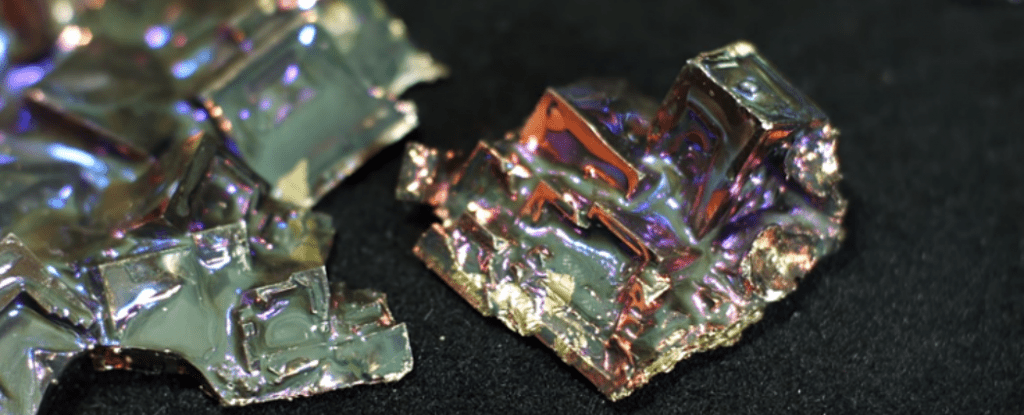Bismuth is a brittle metal with few remarkable properties – but if you’ve ever seen it crystallized, the odds are it blew your mind. But now, thanks to Youtube user NightHawkInLight, we can make our own bismuth crystals, with no special equipment, at home.
What you need:
- bismuth (cheap, online)
- safety goggles
- protection gloves (preferably leather)
- a stove
- a pot (will be damaged)
- a fork
Basically, aside from the bismuth, you don’t need anything special, and you can easily buy bismuth ingots online (for example on Ebay) for under $50. You can do this on a simple stove, as bismuth has a much lower melting point than other metals at 271.5 °C (520.7 °F) – but you still don’t want to expose your skin to that.
You just need to place the bismuth ingot in a small, stainless steel saucepan – preferably one that you don’t cherish too much, because it will be almost impossible to clean, and you don’t want to cook stuff on bismuth remains. In a few minutes, the bismuth will melt completely becoming liquid; simply turn off the fire and clean the surface with a fork. Then, as it starts to solidify, gently raise it a bit so that it doesn’t stick to the bottom.
If the results aren’t satisfying, you can always melt again and create new crystals.
“At first, the crystals appear only silver, but a layer of oxidation quickly adds colour, the shade of which is determined by what temperature the crystals are when they first contact the air,” says NightHawk.

The video also shows how to make bismuth crystal geodes, but that’s a bit more advanced.
Was this helpful?



